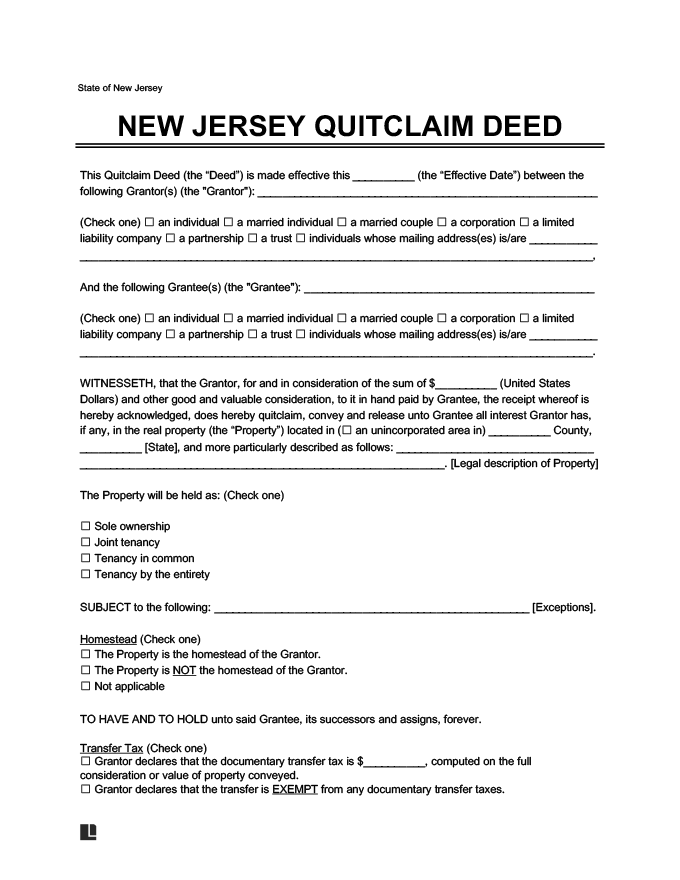Following the right steps to file a quitclaim deed in New Jersey will ensure the validity of your document and allow you to protect yourself, whether grantor or grantee.
Step 1 – Gather Your Documentation
Before putting together a quitclaim deed, you will need to reference the existing title to the property. The title should contain the legal description of the property as well as information about the current owner.
Step 2 – Fill Out the Quitclaim Deed and Relevant Paperwork
Fill out all information required for the quitclaim deed. In addition, you should fill out the other paperwork necessary for your real estate property transfer, including, if needed, Form RTF-1 for tax exemptions, RTF-1EE for real estate transfers in which the consideration is over $1,000,000, and Form GIT/REP-1 for non-resident sellers. Do not sign any forms that require notarization until you are in the presence of a notary, as they will need to witness you signing and dating those forms to validate them.
Step 3 – Take the Forms to a Notary
Find a notary and have them witness the grantor’s signature on the documents. The notary will stamp and sign the documents, confirming their validity. The grantor will need to show their ID to the notary to confirm their identity.
Step 4 – File the Forms with the County Clerk’s Office
Visit the county clerk’s office in the county where the property is located. There, you will pay all relevant transfer fees and real estate taxes on the property. You should provide the address where the form will be sent once it has been filed and registered. The real estate transfer is not valid until it has been filed with the county clerk’s office.
